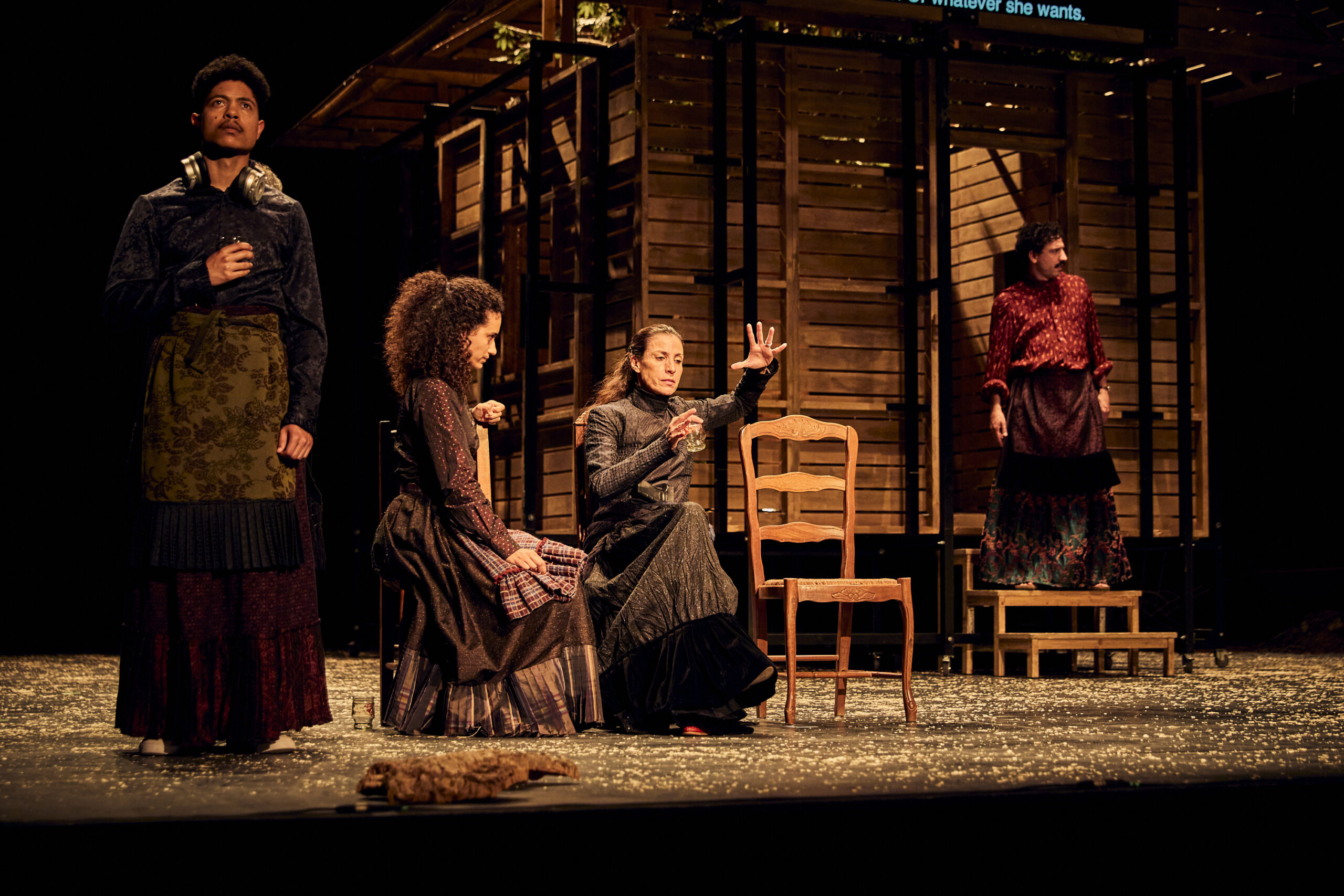and as if nothing
amilton de azevedo writes about Catarina and the Beauty of Killing Fascists, by Tiago Rodrigues (Portugal), presented in the 2024 Festival TransAmériques (FTA – Tiohtià:ké/Montreal). this text is part of a special coverage; the critic traveled to Canada at the invitation of the FTA.
[originally written in portuguese; version available here: e como se nada]
“Sometimes life feels harshly discouraged. But then I remember that those fascists are really eager for death and it occurs to me that the greatest transgression is to stay alive. To live is our greatest revenge against these fuckers.” (Luiz Antonio Simas, on his twitter, in a free translation)
Catarina narrates the fire to be set. People are used to extinguishing fires, but what about when it is necessary to provoke them? The family awaits for Catarina, his 26 years recently complete, a moment when one becomes more than a witness but an agent of that annual ritual. Catarina and the Beauty of Killing Fascists (Portugal, 2020), by Tiago Rodrigues, presents the story of this continuous act, between justice and revenge.
The gesture repeated every year is concrete and symbolic, as is the house at the center of the stage – and its corktree, which cork was removed, differently from the many other planted, referenced throughout the narrative – that opens itself whilst the familiar debate becomes less and less intimate in the set design by F. Ribeiro, and the light design of Nuno Meira, that moves times and atmospheres in its transitions. Also the costume design by José António Tenente makes for all of those Catarinas something that simultaneously distances them from contemporary everyday but yet maintains references to períods of Portugal history.
- Read more: access this link for more theater critics written in english
- Read more: follow ruína acesa’s FTA special coverage
The beauty of killing fascists and fires that get out of control. Catarina is a generous piece regarding the constitution of its characters and their ways of being in the world, as Rodrigues’ dramaturgy shows an accurate sewing between daily dialogues, direct and indirect quoting, philosophical dilemmas and speeches of tremendous poetic beauty. When the raison d’être of those Catarinas is revealed through the letter read by Catarina, cousin of the narrator, our love, the meanings around the play at the same time are simplified and complexified. Everything is there: hardly questionable reasons and an act of profound honesty and courage.
But Catarina can’t bring the summer herself. Catarina and the Beauty of Killing Fascists is set on the day where the certainty of the gesture meets doubt. So, Catarinas approach the trolley dilemma, the tolerance paradox, relations between intention and effect, evokes Brechts and Gandhis in an open mise-en-scène, where the audience is included in the debate. The epic nature of Rodrigues’ work is announced from the beginning: Catarina, the narrator, the one that chose silence, is telling of what already happened.
In its movement of making contradictions visible, Catarina and the Beauty of Killing Fascists offer a brechtian experience to the audience; according to Augusto Boal, Brecht “proposes a Poetic where the spectators delegate power to the character for this to act in their place, but reserves the right to think for themselves, many times in opposition to the character”, producing, thus, conscientization. When the moment for the big coup de théâtre applied by Rodrigues comes, the work gives a step forward, not explicitly, towards Boal’s “Poetic of the Opressed“: “the spectator rehearses, preparing themselves for the real action“.
It is implied that the piece starts to wait for something from the audience. Reactions vary, between nervous laughter, booing, insults, attempts of anything. And as if nothing, everything keeps going until the end. After everything debated, all the complexities that have emerged, the small discordances, the deep reflections, Catarina and the Beauty of Killing Fascists offer its viewers the unbelievable of the real.
There are no loose ends in the dramaturgy precisely because of its unfolding, and what is left to the public is just to organize everything that was seen beyond the exceptionally simple reading regarding the discourse of the play. One can look for the guilty, the responsibles; or one can search between the lines for what to do, then, in front of what is seen and what is lived. And the audience is made witness, accomplice, participant; in front of so much, is made of what?
The ghost hand of an ephemeral Catarina lying over the arm that holds a gun. The power to stop time. A family photograph. Listen, listen, talk, talk. To drink, to dig, to plant, to endeavor, to prefer not to, to remember, to militate. Catarina, the narrator, and his silence that remains. In this contemporary fable, so many is moved. And as if nothing, between violence and beauty, hope and emptiness, past and future, life goes on (in disenchantment).

